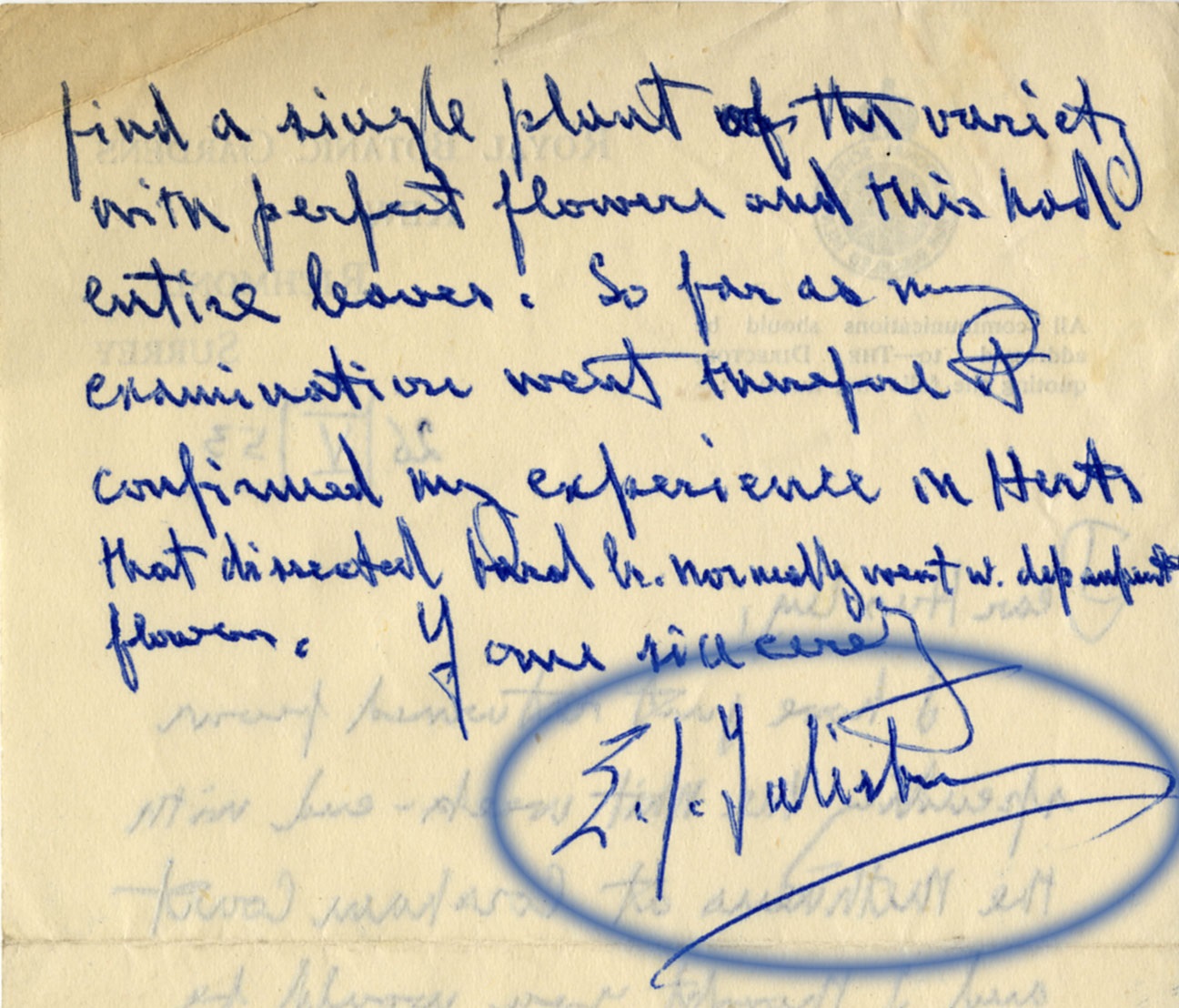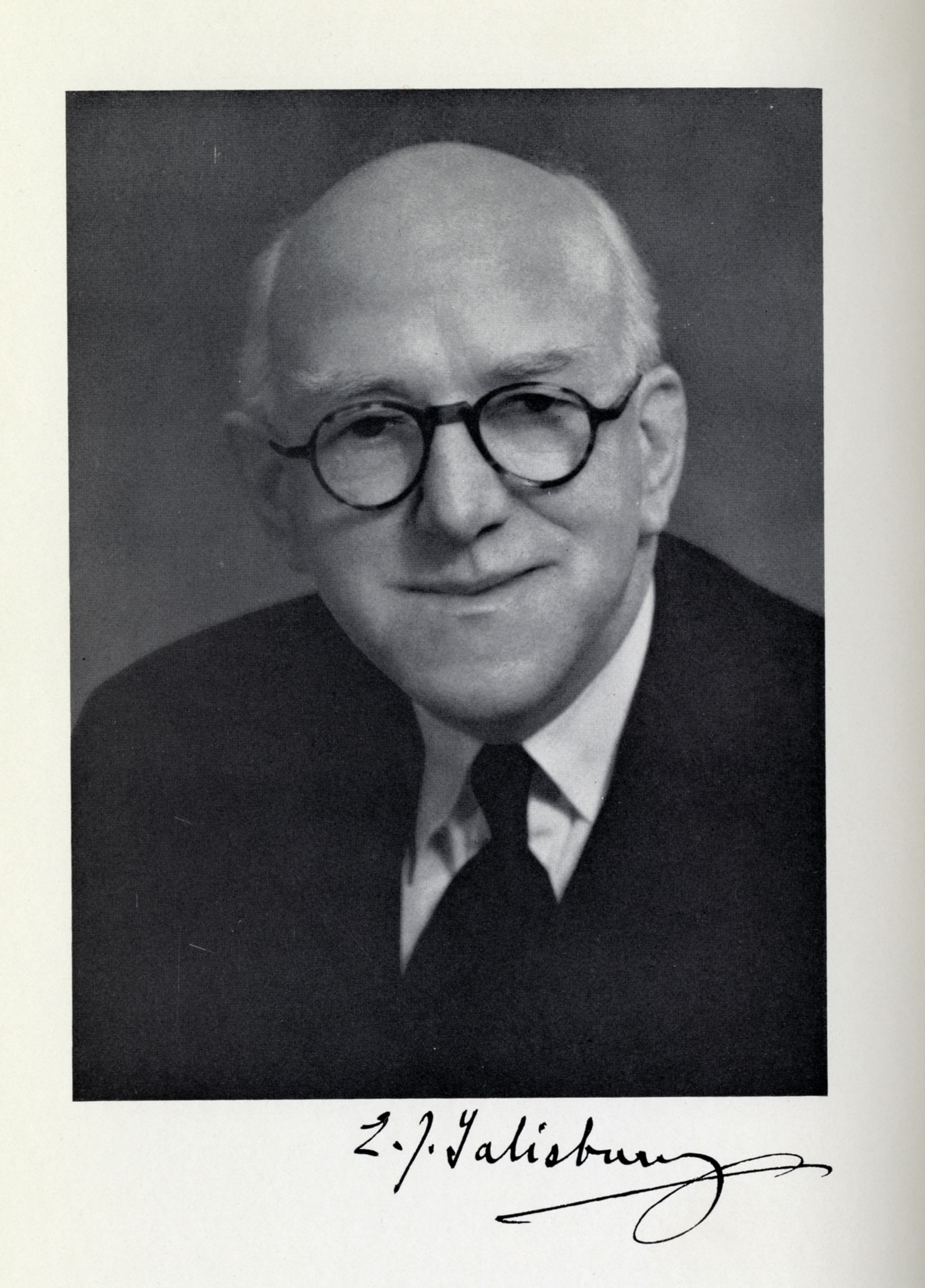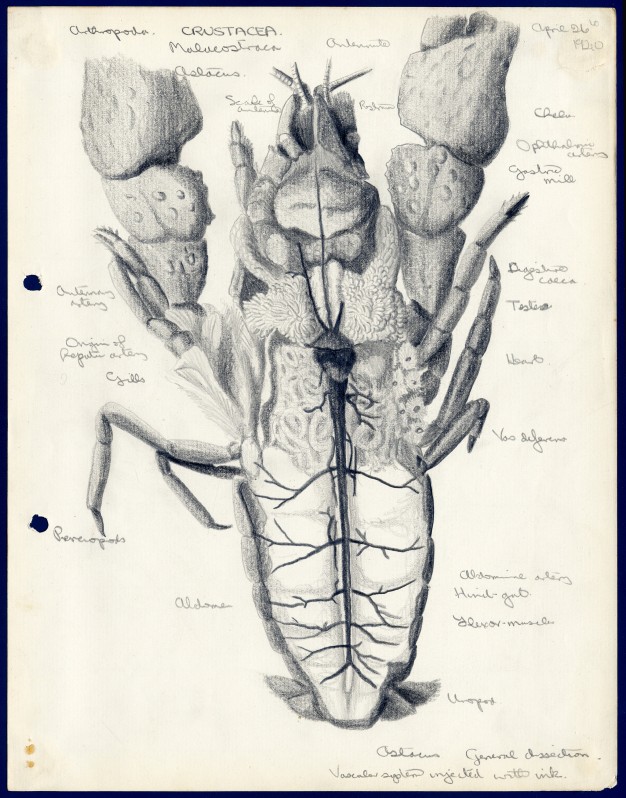The Julian Sorell Huxley Papers, or Adventures in Author Identification
An important, yet at times challenging, task of manuscript processing is identifying the authors of letters. Archivists need to employ various strategies and consult various sources to identify correspondents. Identifying the author of two particular letters in the Julian Sorell Huxley Papers (Mss.Ms.Coll.165) proved a challenge.
The British evolutionary biologist Julian Sorell Huxley (1887–1975) was a leading figure in the 20th-century neo-Darwinian synthesis and the first Director General of UNESCO. The Huxley Papers include a stunning set of anatomical sketchbooks, containing over 700 sketches of animals, with labeled parts and notes. The collection represents a small sample of Huxley’s work, primarily from his time studying genetic polymorphism in the 1950s.
The collection also includes a small, but significant, series of correspondence, containing approximately 70 letters from leaders in the fields of biology, botany, genetics, and zoology. Two handwritten letters from May 1953 in particular proved difficult to identify. Huxley filed the letters in a folder filled with research notes labeled “Morphism—Plants.” The unidentified author wrote the letters on Royal Botanic Gardens stationery and made several references to plants. The author signed one letter with a flourish with what appeared to be “S. I. Yulish,” and concluded the other with initials that looked like “S. I. Y.”

I set about trying to confirm the name. First, I consulted a controlled vocabulary of names, the Library of Congress (LC) Authorities list. The list included an older entry for “Samuel Yulish.” But, without any authority record notes, or biographical notes describing the person, there was no way to confirm whether this person was the mysterious author.
I next searched WorldCat, the world’s largest library catalog, for authors named “Yulish.” None of the 90 records returned looked promising.
After conferring with a colleague to seek another opinion on what the name might be (she agreed the surname looked like Yulish, but offered the possibility that the preceding initials might be “E. J.”), I then searched the web trying to link a Yulish, any Yulish, to the right time, place, and subject (England, 1950s, botany). No luck.
Next, I combed the bibliography of Huxley’s 1955 paper “Morphism and Evolution”—as many of the correspondents in the collection are sources for this work—to no effect.
I returned to the source of the letters, looking through Huxley’s notes near where the letters were found. This introduced an additional complication to the search—Huxley’s handwriting is often more indecipherable than that of the mysterious author! There was nothing that looked remotely like “Yulish” in the notes.
Fighting frustration, I noticed that a note that immediately followed one of the letters started with a citation of an author with the middle initial “J.” At first glance, the first initial and last name were incoherent, but I returned to “Morphism and Evolution” to search for any possible matches. To my pleasant surprise, the bibliography included: “SALISBURY, E. J. 1935. The Living Garden. Bell, London.” Looking at Huxley’s note, this was an exact match! Now to determine if Salisbury was the elusive author.
I reprised my search of the LC Authorities and discovered that, according to the Library of Congress catalogers, Edward James Salisbury (1886– ) is still living and is 128 years old! All kidding aside, the entry included a vital clue linking the letters to Salisbury. The authority record note stated that Salisbury was a British botanist, and served as director of the Royal Botanic Gardens (RBG) at Kew from 1943 to 1956. This placed Salisbury at the RBG at the time of the letters, but was there a way to match Salisbury’s handwriting to the letters?
I searched the APS’s online manuscript catalog, MOLE, to see if the library had any of Salisbury’s letters in another collection as a means of comparison. Again, no luck.
The LC Authority record did list Wikipedia as a source for information on Salisbury. After examining their entry, I learned that Salisbury was in fact no longer living (he died in 1978) and that he was a Fellow of the Royal Society. This was a good bit of fortune. Every year, the Royal Society publishes a wonderful resource memorializing its past members, the Biographical Memoirs of Fellows of the Royal Society. At the beginning of each biography is a portrait of the subject in question, followed by an image of his or her signature. An excellent tool for an archivist trying to identify a signature!
The APS Library does possess the full set of Biographical Memoirs, and volume 26 contains a biography of Salisbury, along with his picture and signature. And . . .

Eureka! The signature is a match to the one found in the letters. The author is identified; “S. I. Yulish” is really Sir Edward James Salisbury (1886–1978), F. R. S.


